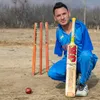The creators of everything from microprocessors to manga, from blue LED to bullet trains, Japan has provided a plethora of innovations and technologies to the world. Having such a rich innovative past, the Tokyo Organising Committee (TOC) of the Olympic and Paralympic Games vowed to make the Tokyo 2020 Olympic Games the “most innovative Olympics” in history. And how beautifully they delivered!
The “Tokyo 2020 Robot Project” provided assistance to spectators, offered stress-free entry/exit and viewing support for wheelchair users by assisting with the delivery of water and guidance to seats, assisting at throwing events at the Olympic Stadium by retrieving items such as hammers or javelins thrown by athletes. Even the mascots of the Tokyo Olympics are the Miraitowa Robot and Someity Robot.
These robots welcomed athletes and spectators at games venues and other games-related locations with human-like movements, such as bowing and waving, and with a variety of facial expressions to greet guests.
Toyota, the multinational automotive manufacturer has introduced the robots for the Tokyo 2020 Robot Project. The Tokyo 2020 Robot Project has proven to be a fine example of a public-private initiative. Similarly for the “Tokyo 2020 5G Project”, the TOC in collaboration with Intel Corporation, Nippon Telegraph and Telephone Corporation (NTT), and NTT DOCOMO, Inc., showcased innovative sports viewing experiences by deploying 5G technology at three competition venues for sailing, swimming and golf.

The Tokyo 2020 Olympics has set the sustainability concept of the Games as “Be better, together
for the planet and the people”.
Another solution, which enriched the user experience was the SEATSERVE- allowing fans to order via their mobile phone for delivery direct to their seat anywhere in the stadium. These innovations will trickle down to other sporting experiences, thus offering new entertainment formats.
The 5,000 odd medals of the Olympic Games are made with entirely recyclable materials. In fact, the citizens of Japan were asked to get rid of all their electronic devices to contribute to this project. Not only in the field of technology, but these Olympic Games also have an ecological focus too. It has banned the use of tobacco and smoking in any of the venues of the Olympic and Paralympic Games, whether covered or outside, including the perimeter areas that are managed by the organization.
The cardboard beds used for the Olympic village can be recycled and can hold up to 200kg of weight. The Tokyo 2020 Olympics has set the sustainability concept of the Games as “Be better, together – For the planet and the people”.
Innovative approaches adopted by other countries like China and USA
When you talk about innovation in sports training, China is one such country which has taken this concept to a next level. China has leveraged “dual-use” technology to train its athletes. 'Spin-offs' from China's military and scientific innovations are helping fulfil its Olympic ambitions. China has heavily increased investment in sports science infrastructure and is using ballistic missile and aerospace technology to train its athletes.
A new wind tunnel dedicated entirely to sports was completed in Beijing last year to help improve performance in international competitions, including the next Winter Olympic Games to be held in China. China Aerospace Science and Technology Corporation (CASC) was instrumental in the training of China's swimming team for the Olympics.
CASC scientists created a miniature version of components used by intercontinental ballistic missiles to help swimmers refine their technique and cut down on drag.
The simulation allowed the CASC scientists to calculate the precise drag produced by different movements. The Chinese swimming team won three gold medals, two silver medals and one bronze medal. In weightlifting, Anta sports from China has designed weightlifting shoes to enhance mobility, increase overall stability, and provide feedback when moving weights of more than a ton.

Countries like China have increased investment in sports science infrastructure and is using ballistic missile and aerospace technology to train athletes to win medals.
The Speedo US federation suits with partners like London’s Natural History Museum and several leading research institutes studied the hydrodynamics of sharkskin to produce swimsuits that have been consistently helping athletes churn out world records and competitive wins. At the US Olympic Committee’s flagship training centre in Colorado Springs, Colorado, athletes used a high tech training room that simulated the climate of Tokyo.
Another aspect of Team USA’s training has been mental preparation, EEG sensors were used to find out how changes in an athlete’s brain waves can affect outcomes. Meditation app support was provided whenever the brain wave monitoring indicated that an intervention is needed.
Next steps for India
India has won one gold, two bronze and three silver medals at the Tokyo Olympics. With an almost 1.3 billion population, how can we still not produce enough medallists on the world stage? We need to understand that improving sports infrastructure not only produces better sportspeople, but also contributes significantly to the economy. We need to actively encourage private players to enter into sports-tech, and help build the start-up culture as a potential breeding ground for new possibilities in sports technology.
Following the 2000 Olympic Games in Sydney, Australia, where Great Britain won 28 medals, UK Sport dramatically modified its national sport goals and programmes to win a record 65 medals at their 2012 London Olympic Games. Canada also achieved similar improvement between 2005-2018, as it increased its Winter and Summer Olympic medals tally from 30 to 50 by the "Own the podium program".
Taking cue from other nations, India also launched its Target Olympic Podium Scheme (TOPS) programme. The programme is monitored by the Ministry of Youth Affairs and Sports, wherein it provides financial support and assistance to top athletes in the country.
It includes training by reputed coaches at world-class facilities, purchase of equipment, supporting the services of physical trainers, sports psychologists, mental trainers and physiotherapists. At the same time, the athletes are provided with a monthly incentive of Rs. 50,000. Though some athletes have expressed disappointment over their exclusion from the programme, TOPS has been applauded by other champions such as Mirabai Chanu, Saina Nehwal, MC Mary Kom, and Neeraj Chopra.
China with a population of 1.4 billion people has bagged 75 medals in total and has won the highest no. of gold medals i.e. 34. It is high time we had a wake-up call to learn from the success of other nations that have used innovation and technology in sports. We should ask ourselves the potential use of “Dual-use” technology in sports. We need to have wiser HR planning for our 1.3 billion people. We need to find the talent at a young age and nurture them. Everybody can't become an engineer. Cultural and mindset shift amongst parents is the need of the hour.
We need to back the right horses to the hilt.
YourStory’s flagship startup-tech and leadership conference will return virtually for its 13th edition on October 25-30, 2021. Sign up for updates on TechSparks or to express your interest in partnerships and speaker opportunities here.
For more on TechSparks 2021, click here.
Edited by Diya Koshy George








